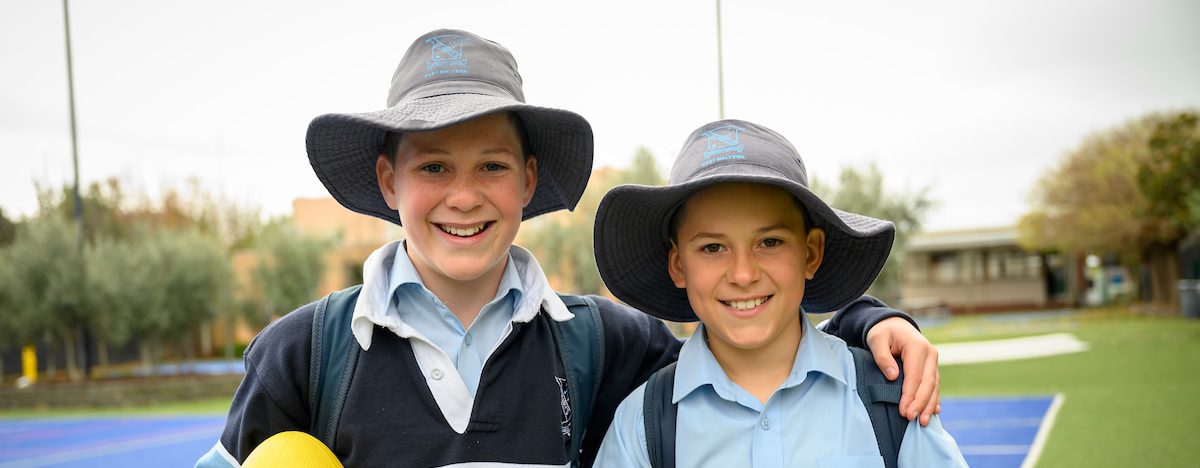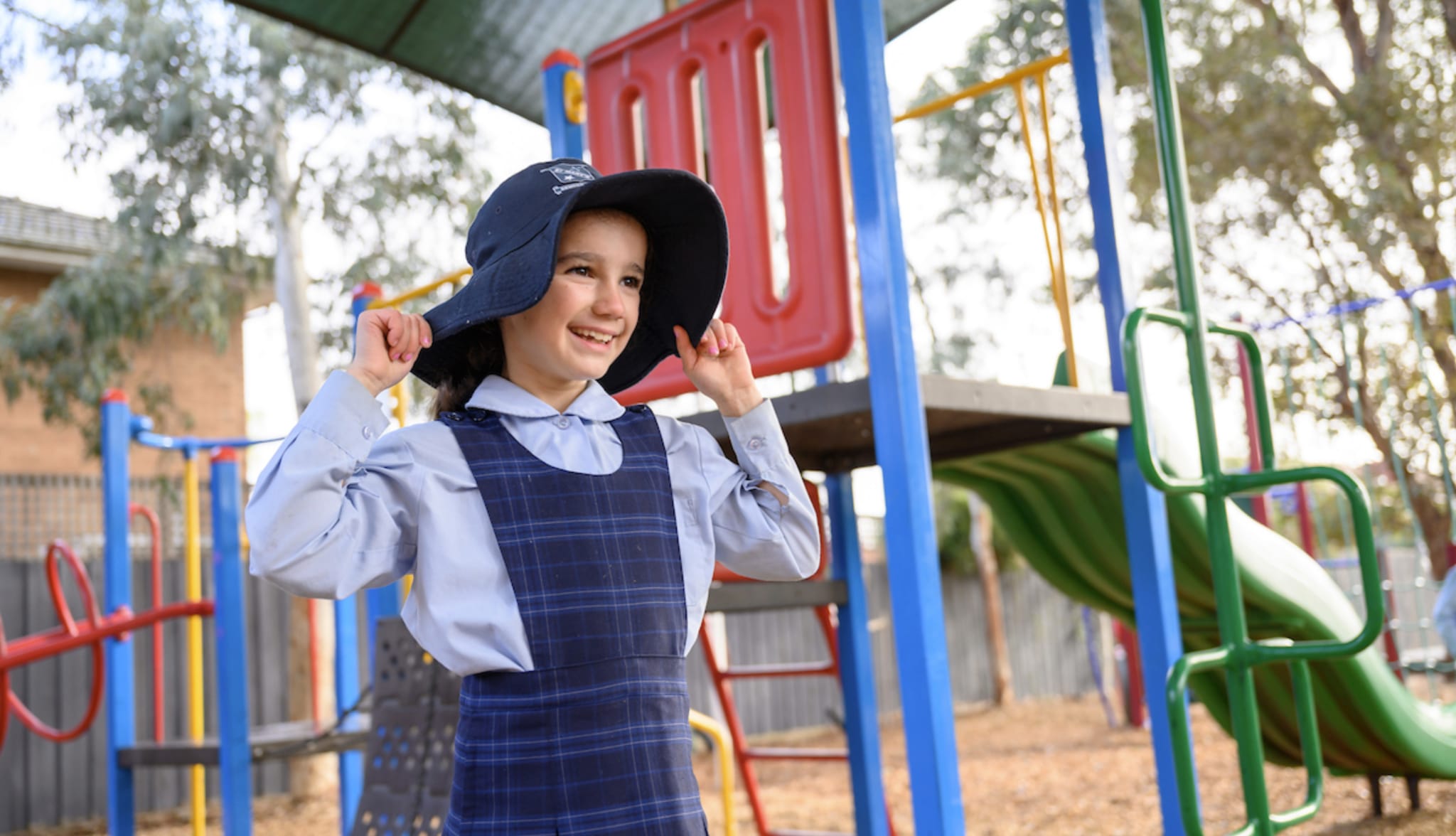Recommended UV protection strategies
Secondary schools are encouraged to implement as many of these measures as practical.
Uniforms, clothing and hats
- UV protective items are available to purchase as part of the uniform and are included in the school dress code
- School sport uniforms are UV protective
- Students are encouraged or required to wear UV protective uniforms/items (i.e., collared shirts, elbow or full length sleeves, longer shorts, skirts or long pants), including sports uniforms
- Staff and students wear a broad-brimmed or bucket hat that protects the face, neck, ears and crown of the head when outside. Caps are not UV protective and should not be encouraged
- Spare hats should be available for students to ensure their outdoor activities are not restricted if they forget their hat, or students without hats should be encouraged to be in the shade
- Wear a rashie or similar top for swimming/water activities (may not be appropriate for competitive swimming)
- Adults wear appropriate sunglasses and students have the option to wear them
Shade
- The school has sufficient shade or is working towards increasing shade (natural or built) in the school grounds, especially in areas where students congregate at break times
- The use of shade (including temporary shade) is maximised during outdoor activities and indoor facilities are used wherever possible
Scheduling
- When outdoor activities are scheduled at times when the UV Index is 3 or higher, maximum use is made of shade, sunscreen, hats and long clothing to protect students and staff
- Where possible, outdoor activities are scheduled out of peak UV times
Sunscreen
- Sunscreen is available and accessible to all staff and students
- The use of SPF50 or SPF50+ broad-spectrum, water-resistant sunscreen is required before outdoor activities, recess and lunch. Time is given to apply sunscreen and reapplication after 2 hours is encouraged during extended outdoor periods
Other UV protection strategies
- Positive role modelling of sun protection behaviour is demonstrated by all school staff, parents and visitors
- Physical activity in conjunction with sun protection practices is promoted. Students who do not have a hat should not be excluded from outdoor activities.
- SunSmart student leader committees, roles and projects
- UV protection and other topic related curriculum assignments integrated into Health, Science and Design and Technology projects
- Health Expos with SunSmart messages included
- Develop a SunSmart information page on your school website or add the SunSmart widget. An example of this is Mukinbudin District High School
For more information, contact the SunSmart Education Program Coordinator (08) 9388 4351 or email sunsmart@cancerwa.asn.au



